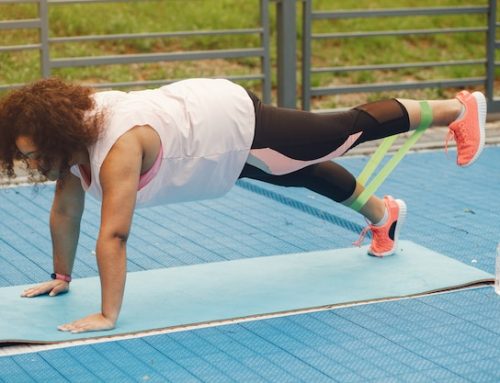Start with a goal: losing 10lbs in a month
If you’re looking to lose weight, you may have heard that the key to success is burning more calories than you consume. While that is true, the amount of calories you need to cut in order to lose weight can be a mystery. To lose 10lbs in a month, you need to create a calorie deficit of about 35,000 calories. That’s a lot of calories to cut, but if you focus on a healthy diet and use high-intensity interval training (HIIT), it’s possible.
Understanding high-intensity interval training (HIIT)
High-intensity interval training, or HIIT, is a type of exercise that alternates short periods of intense exercise with periods of rest or low-intensity exercise. The idea behind HIIT is to push your body to work harder in a shorter amount of time, which can help you burn more calories and increase your metabolism.
| Type of Exercise | Number of Calories Burned in 30 Minutes (150lb person) |
|---|---|
| HIIT | 400-500 |
| Jogging | 300-400 |
| Cycling | 200-300 |
Matching your diet to your goals
Of course, exercise is only part of the equation for weight loss. You also need to pay attention to your diet. To lose weight, you need to create a calorie deficit, which means consuming fewer calories than you burn each day. Generally, a good rule of thumb is to cut about 500-1000 calories per day to lose 1-2lbs per week.
| Calories Consumed per Day | Calorie Deficit per Day | Expected Weekly Weight Loss |
|---|---|---|
| 2000 | 0 | 0lbs |
| 1500 | 500 | 1lb |
| 1000 | 1000 | 2lbs |
Diet – HIIT exercises
Diet and high-intensity interval training (HIIT) exercises can be a powerful combination for weight loss and overall fitness. Here are some general tips for both aspects:
Diet:
- Balanced Nutrition: Focus on a well-rounded, balanced diet that includes a variety of fruits, vegetables, lean proteins, whole grains, and healthy fats. Avoid excessive processed foods, sugary beverages, and unhealthy fats.
- Caloric Deficit: To lose weight, you generally need to consume fewer calories than you burn. Calculate your daily caloric needs and aim for a moderate caloric deficit (usually 500-1000 calories per day) for gradual and sustainable weight loss.
- Portion Control: Pay attention to portion sizes and practice mindful eating. Eating smaller, frequent meals throughout the day can help control hunger and prevent overeating.
- Hydration: Drink plenty of water throughout the day to stay hydrated and support your body’s functions. Avoid excessive consumption of sugary drinks or alcohol.
- Consult a Professional: If you have specific dietary needs or health concerns, it’s always a good idea to consult a registered dietitian or a healthcare professional who can provide personalized advice and guidance.
HIIT Exercises:
- Intensity: HIIT workouts involve short bursts of high-intensity exercises followed by brief recovery periods. Push yourself to perform the exercises at maximum effort during the high-intensity intervals.
- Variety: Incorporate a mix of cardiovascular exercises (e.g., sprints, jumping jacks, burpees) and strength-training exercises (e.g., push-ups, squats, lunges) into your HIIT routine to target different muscle groups and maximize overall fitness.
- Interval Structure: Typically, a HIIT workout consists of several rounds of intense exercise (e.g., 20-30 seconds) followed by a short rest period (e.g., 10-15 seconds). Repeat this cycle for a total duration of 15-30 minutes.
- Warm-up and Cool-down: Prior to starting a HIIT session, warm up your body with dynamic stretching or light aerobic exercises. Afterward, cool down with static stretches to promote flexibility and recovery.
- Progression and Rest: Gradually increase the intensity or duration of your HIIT workouts over time as your fitness level improves. However, be sure to allow your body enough rest and recovery time between sessions to prevent overexertion and minimize the risk of injury.
Combining HIIT and diet for success
To lose 10lbs in a month, you need to create a calorie deficit of about 35,000 calories. That means cutting about 1,200 calories per day. However, it’s not recommended to cut calories too drastically, as that can cause you to lose muscle mass and slow down your metabolism. A more sustainable approach is to create a deficit of about 500-1000 calories per day through a combination of exercise and diet.
For example, if you’re currently consuming 2000 calories per day, you could cut 500 calories from your diet and burn an additional 500-1000 calories through HIIT. This would create a calorie deficit of 1000-1500 calories per day, which would result in a weight loss of about 2-4lbs per week.
Tracking your progress
It’s important to track your progress to ensure that you’re on track to meet your goals. One way to do this is by keeping a food journal to record what you eat and how many calories you consume each day. You can also use a fitness tracker to monitor your exercise and calorie burn.
Staying motivated
Losing weight can be a challenging process, but staying motivated is key to success. Setting small goals and celebrating your achievements along the way can help keep you motivated. It’s also important to find a form of exercise that you enjoy, as you’re more likely to stick with it if you’re having fun.
Conclusion
Losing 10lbs in a month may seem like a daunting goal, but with the right combination of exercise and diet, it’s achievable. High-intensity interval training is a great way to increase your calorie burn and boost your metabolism, while cutting calories from your diet can help create the necessary calorie deficit. Remember to track your progress, stay motivated, and celebrate your successes along the way.





